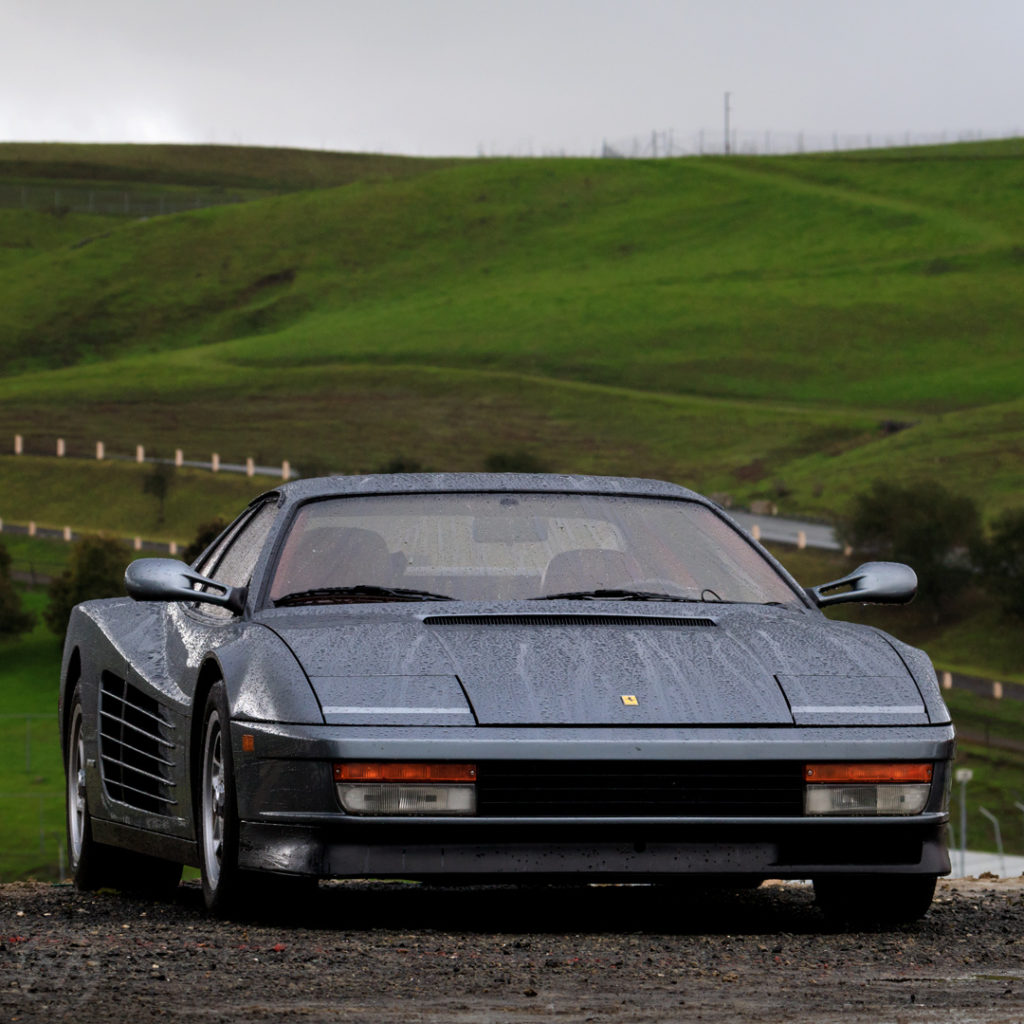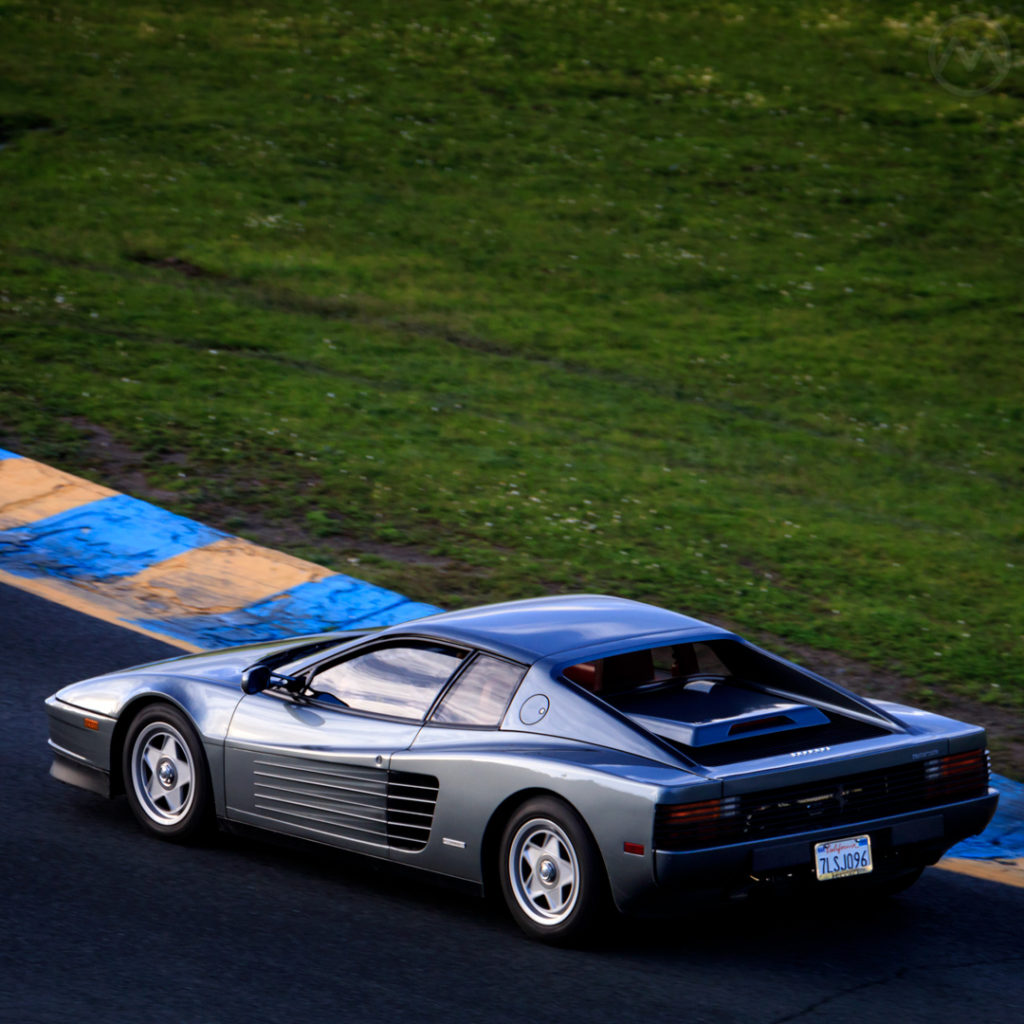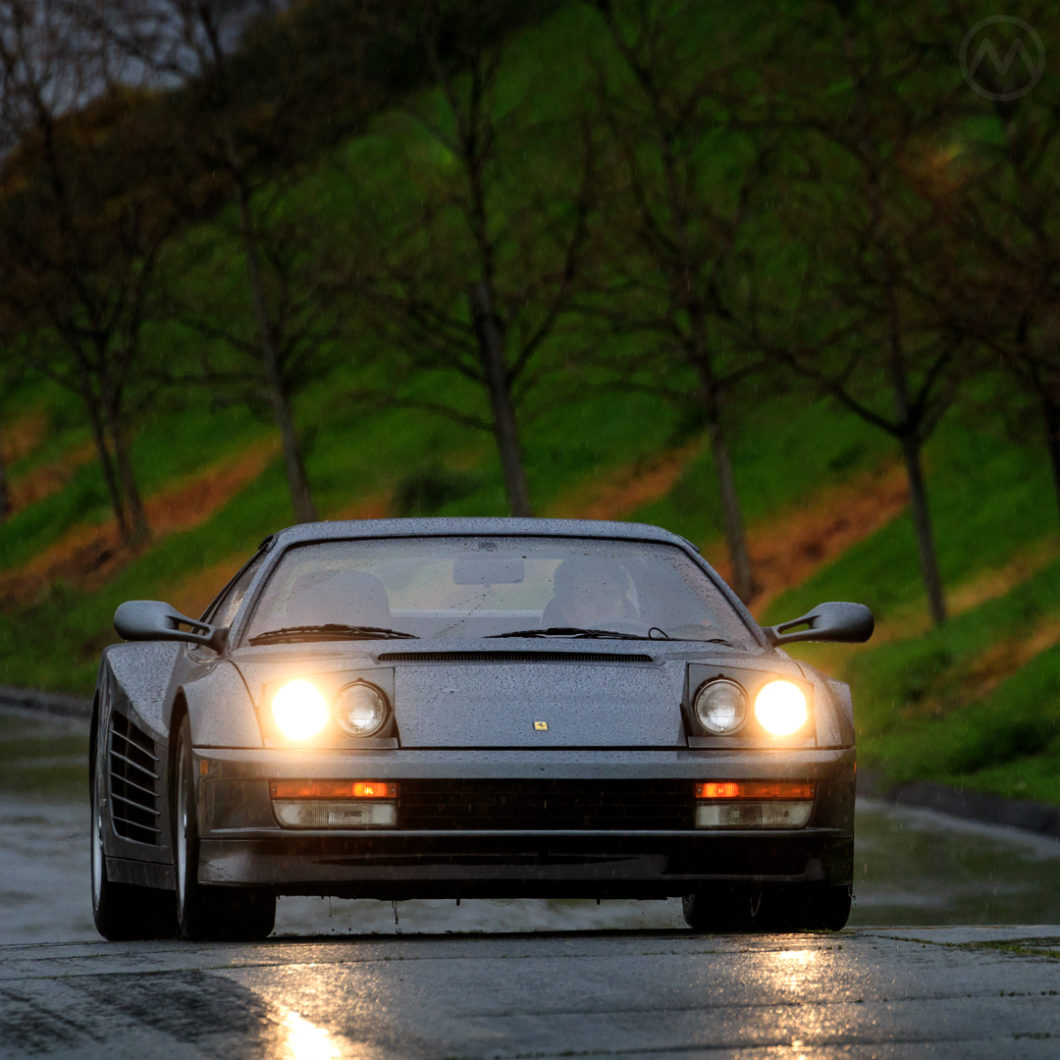When you see a Ferrari Testarossa, you can almost hear Jan Hammer, although Prince’s “Lets go Crazy” would be appropriate too, since it peaked around the time the Testarossa first appeared at the 1984 Paris show.
The car bowed at the Lido Club the night before, but the masses got to see it at the Porte De Versailles – and they were genuinely stunned.
Ferrari style, historically, tended to be sexy but not radical – the TR’s predecessor, the Berlinetta Boxer, was achingly pretty but decided less dramatic than Lamborghini’s Countach. Not so with the Testarossa.
Berlinetta Boxer to Testarossa
Starting in 1979, the Testarossa was developed to be an improved, modernized replacement for the curvy 1970s BB. Indeed, may things about the production Testarossa were evolutionary – but that was all masked by the looks.
The BB’s hot cabin, lack of room, and the fact that it was not officially sold in the USA were all targets for improvement when the project began.
It was the heat transfer from the plumbing that ran from the 512BB’s front-mounted radiator that led to the iconic intakes on the TR. The 512BB’s pipes made the its modestly ventilated cabin perpetually warm.
Two mid-mounted radiators replaced the BB’s arrangement in the TR, banishing the heat but necessitating huge cooling ducts for fresh air and a wider rear track to make them function properly.

Under the skin much of the BB’s excellent chassis was retained but widened at the rear and stretched, giving better handling and more room – both up front and behind the seats. Notably, custom luggage that fit the tiny spaces was a popular choice.
The 4.9L flat-12 continued too, now with 4 valves per cylinder and 390 brutal hp. U.S. certification was baked in from the start. Though the U.S. models had a little less power than the global cars and arrived only in 1985, buyers couldn’t get enough of them, resulting in huge markups.
That proved to be a double-edged sword. The TR’s arrival helped spur a wild speculative boom in Ferraris (the F40 and 288GTO even more so) which came to a crescendo in 1989. As the Japanese asset bubble burst, so too did the market – with Ferrari values crashing spectacularly in the early 1990s. But the public loved the Testarossa, and it soon earned its famous starring role on Miami Vice.
Radical Style
Pininfarina’s Leonardo Fioravanti, who’d styled the BB, also oversaw the team that styled the Testarossa. His team included Ian Cameron, Guido Campoli, Emmanuele Nicosia and Diego Ottina, among others.
His core group of designers iterated many “BB new model” styles and wind-tunnnel tested them all – the Testarossa had, accordingly, much less drag than the 512BB or the Countach.
A sketch by Emmanuele Nicosia ended up the winner. The strakes supposedly added because safety regulations in some countries prohibited the huge open intakes of his original sketches. Irrespective of their origins, the wide haunches and “slicers” thoroughly enthralled the public. The side lines were echoed by the horizontal slats over the taillights on the long, wide rear.

In the late 1980s the aftermarket went crazy for the “Testarossa look.” Many vehicles sported imitation versions of the side intakes and the unusual side mirrors (the early high-mounted single mirror gave way to more conventional ones in 1986).
In the sincerest form of flattery, the Countach sprouted TR-like intakes in 1988 for the 25th anniversary model.
Ultimately the Testarossa became the best-selling senior Ferrari of all time by the time the Testarossa gave way to the revised 512TR in late 1991 – 7,177 were made. Any Ferrari that isn’t red is rare, but Grigio Metallizzato, seen on this ’87 owned by Michael Laity, was probably less than 1% of production.
Special thanks to Michael, who drove this car from L.A. to the 2019 RADwood Sonoma Event.

